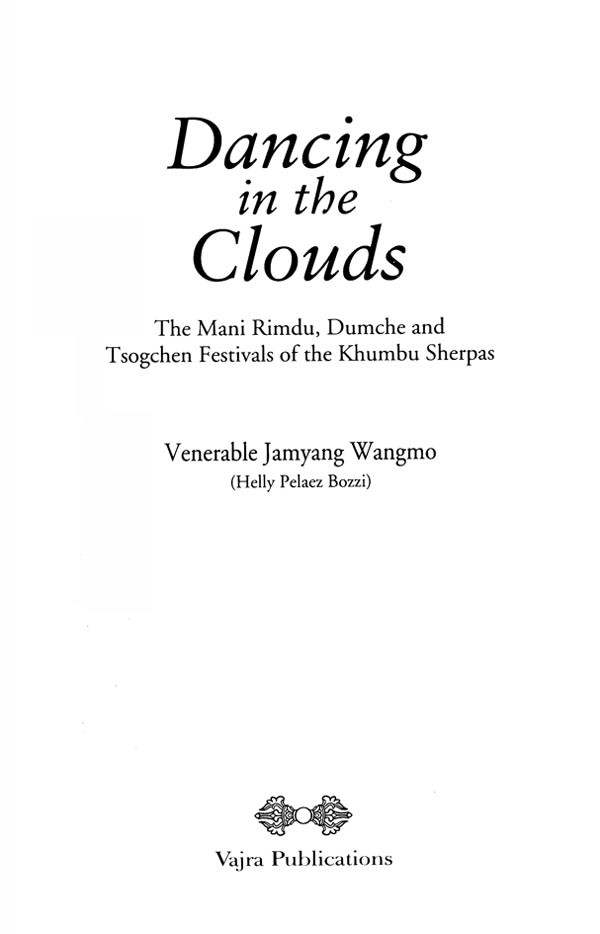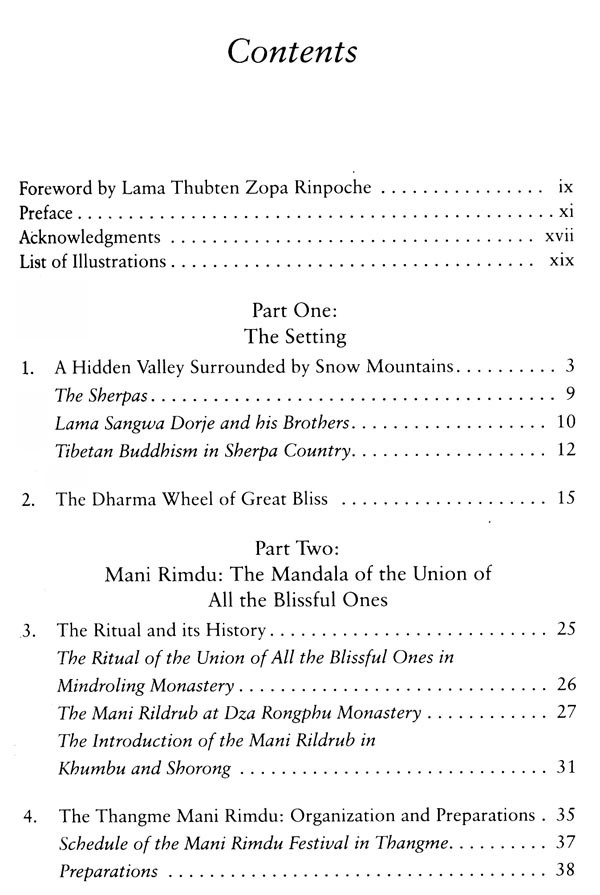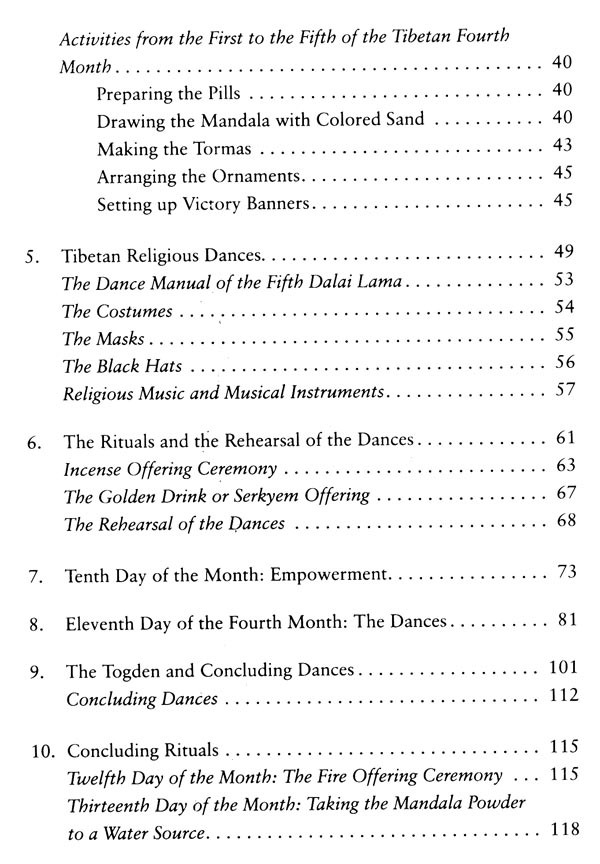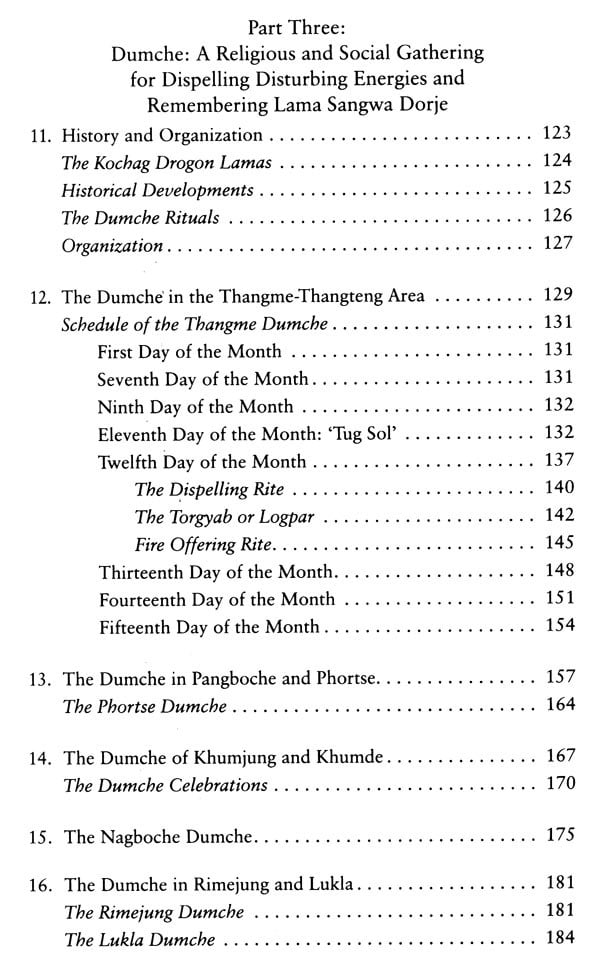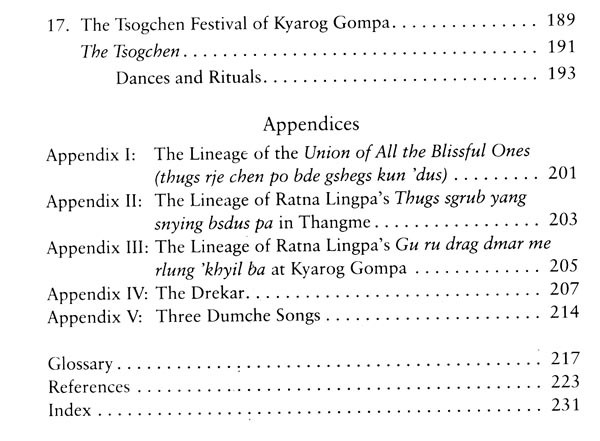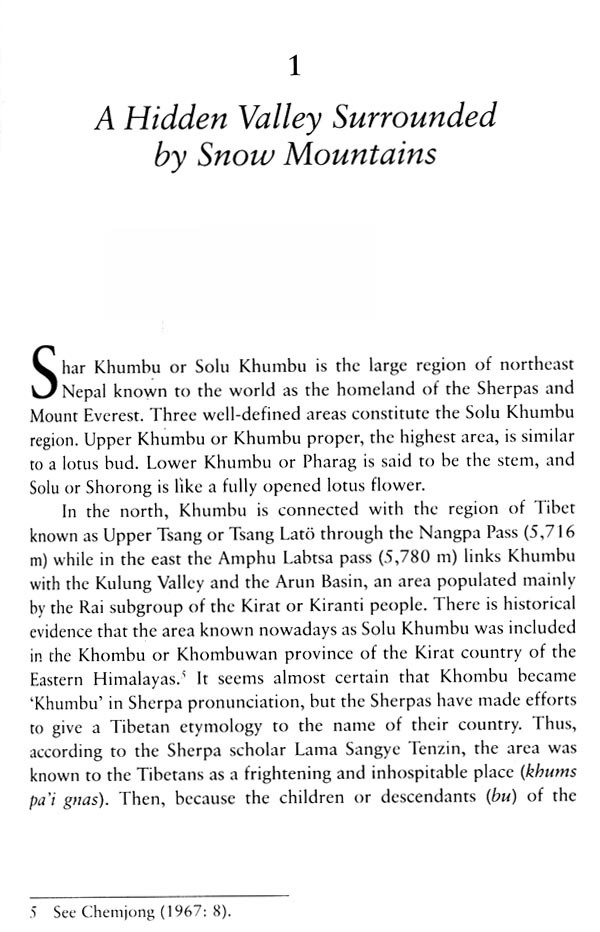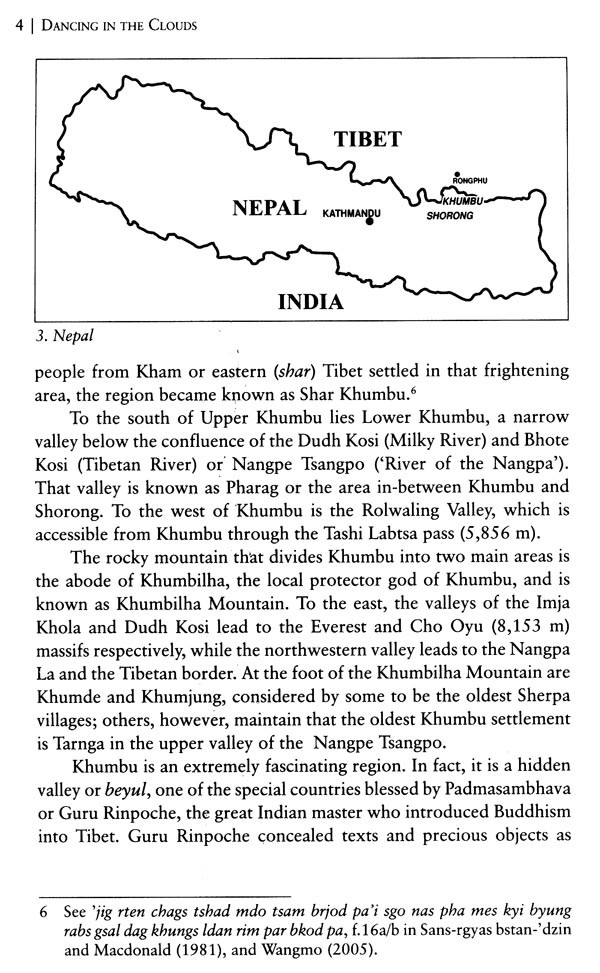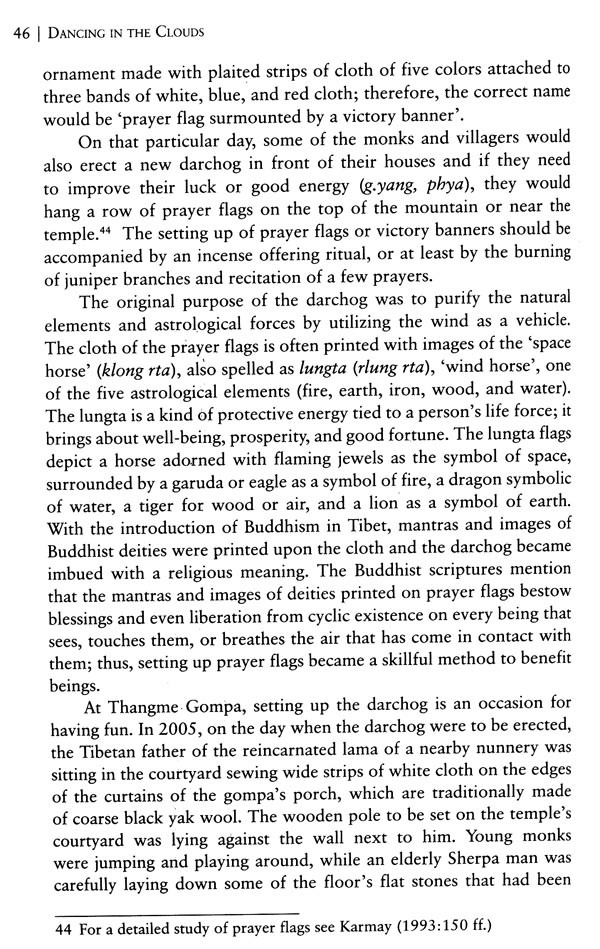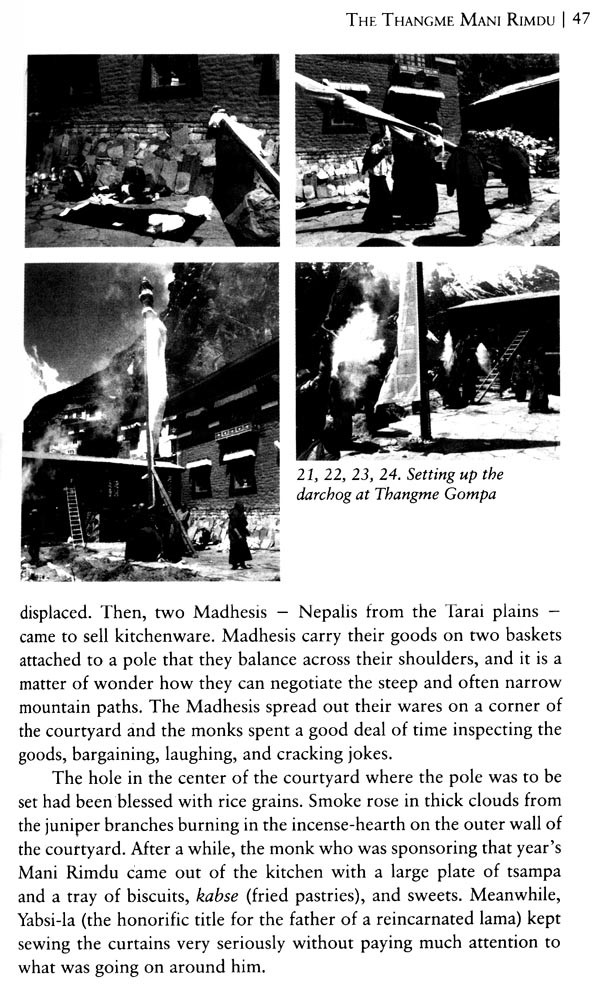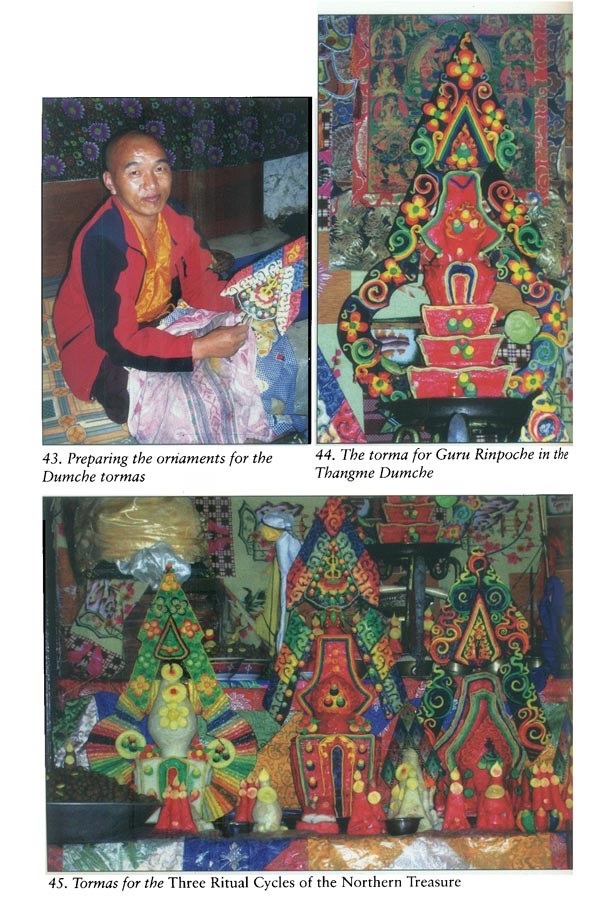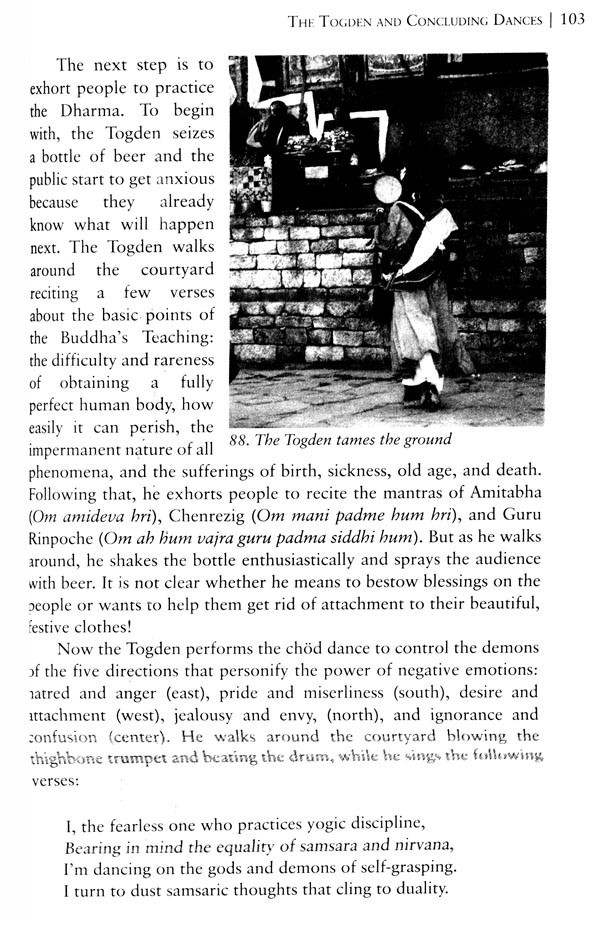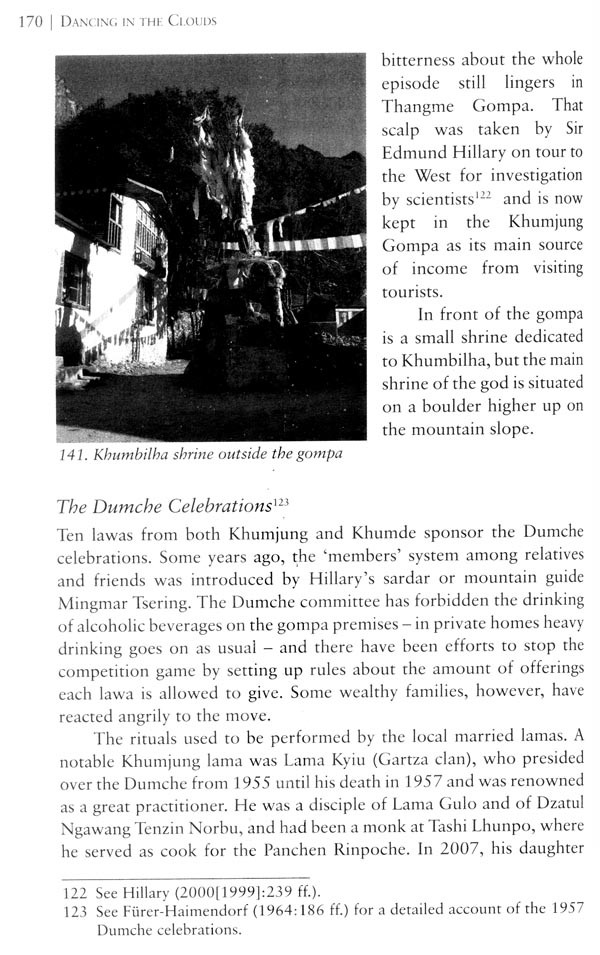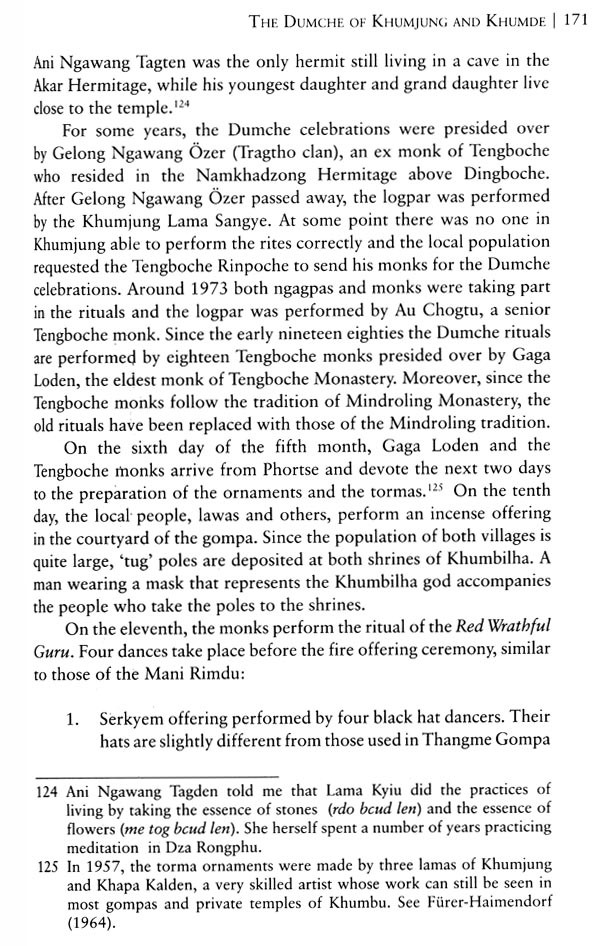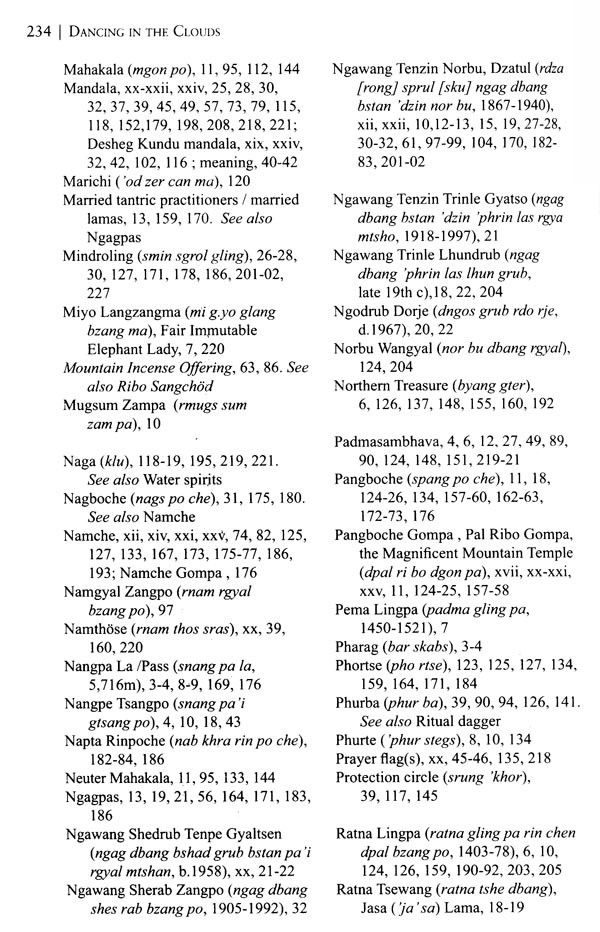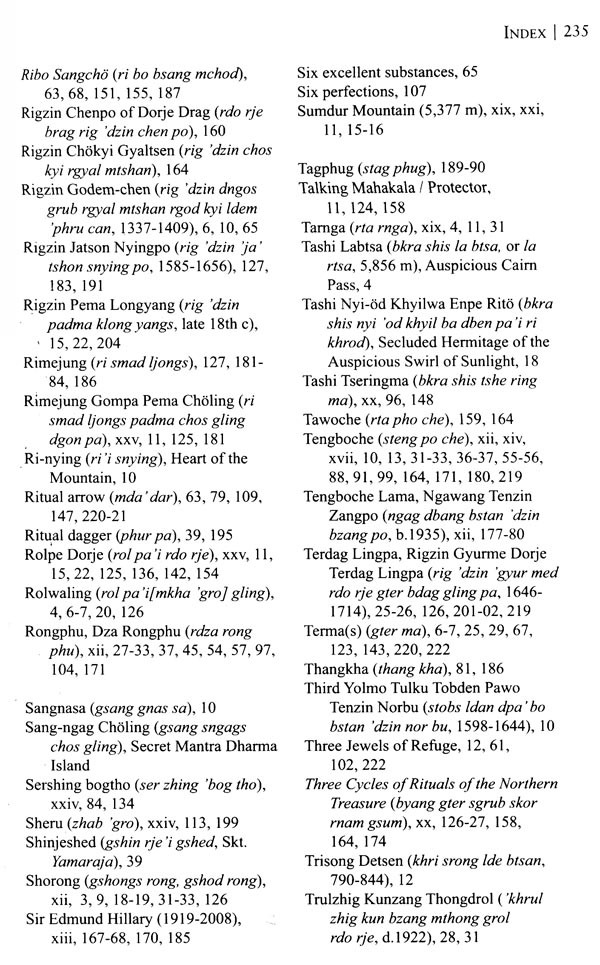
Dancing in the Clouds- The Mani Rimdu, Dumche and Tsogchen Festivals of the Khumbu Sherpas
Book Specification
| Item Code: | AZG877 |
| Author: | Venerablr Jamyang Wangmo |
| Publisher: | VAJRA PUBLICATIONS, NEPAL |
| Language: | ENGLISH |
| Edition: | 2008 |
| ISBN: | 9789937506175 |
| Pages: | 260 (Throughout B/w and C olor Illustrations) |
| Cover: | PAPERBACK |
| Other Details | 8.50x5.50 inch |
| Weight | 380 gm |
Book Description
The Dumche festival, which is a religious and social gathering in remembrance of the first great Sherpa Lama Sangwa Dorje, has its origins in the seventeenth century. As with the Mani Rimdu, changes are creeping gradually into the festival. The present book Dancing in the Clouds contains accurate information about the history, organization, and rituals of the Mani Rimdu, Dumche, and Kyarog Tsogchen festivals, as well as a short history of the Thangme Gompa and its head lamas. It will be of great benefit not only for westerners but also for the new generation of well educated Sherpas to learn the background and meaning of the celebrations they habitually attend.
Venerable Jamyang Wangmo has spent many years among us and is well acquainted with the details of our religious and cultural celebrations. Therefore, I am very happy about her contribution to the preservation of Sherpa culture and religion. There is no doubt that many people will benefit from it.
What makes Khumbu special is the existence of the Buddhadharma. The purpose of the Buddha's Teaching is to liberate numberless deluded sentient beings from the oceans of sufferings of the lower realms, such as the sufferings of the hell realms, the realm of hungry ghosts, and the animal realm. By putting an end to the hallucinated mind, the Dharma brings liberation, peerless happiness, high realizations, compassion towards all beings, full enlightenment, and perfect power to benefit others. This is the real, ultimate goal of life.
Tibetan religious dances belong to the path of tantra. Having performed the meditational retreat of a particular deity, the dancers transform their mental attitude and perform the dances while upholding the divine pride of being the deity. Religious dances, which are very different from Hollywood dances, contain the gist of the 24,000 teachings of the Buddha and to fully understand their meaning one has to study for a whole lifetime. They constitute a method to benefit both self and others and to complete the purpose of life all the way to full enlightenment. Their power to benefit others, however, depends very much upon the motivation of the dancers.
In the tantric path four types of activities can be performed. Some activities are directed to pacifying defilements and sickness, while others increase the lifespan, realizations, and wisdom. Controlling activities serve the purpose of controlling the mind and the disturbing, harmful thoughts, as well as bringing sentient beings onto the path of the Buddha.
few years later, however, back the Thangme Mani Rimdu. then had some acquaintances in the area did not such sense of being among crowd. I did wonder about meaning and purpose of those but no one questioned seemed know; local people considered Mani Rimdu to be important occasion they did understand much its actual significance. Sometime the seventies or early eighties, I decided attend the whole Mani Rimdu and learn more about stayed days Thangme in the house where my teacher Lama Thubten Rinpoche had born, and was see the rehearsal of dances, empowerment, actual dances, and fire offering deeply enjoyed the whole thing and wished someone explain to me meaning everything I saw.
**Contents and Sample Pages**
